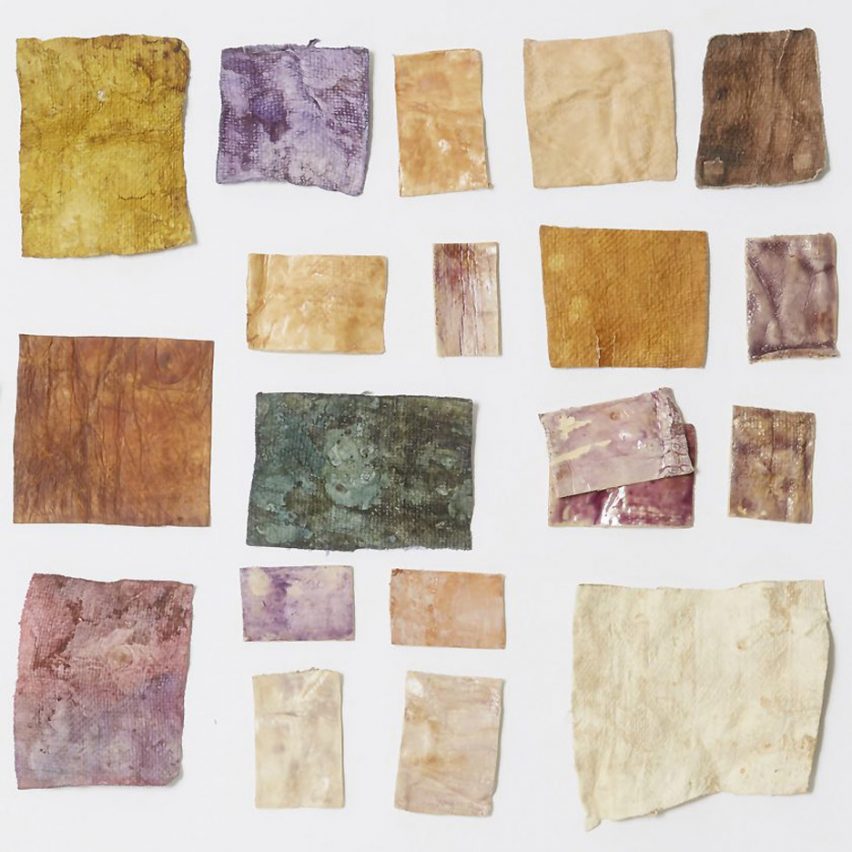Food-waste dyes bring colour to mycelium leather in Sages and Osmose project

Two British materials companies, Sages and Osmose, have collaborated to dye sheets of mycelium with natural food waste, mimicking the appearance of tanned leather and suggesting a colourful future for the biomaterial.
Osmose is a company making a leather alternative from mycelium ? the fibrous underground root network of mushrooms ? while Sages makes natural dyes from food waste such as avocado pits, blueberries, red cabbages and onion skins, which are normally applied to textiles.
The two believe they've achieved a world first with their collaboration, combining two emerging areas of sustainable material development to colour mycelium without resorting to petroleum-based synthetic dyes, thereby keeping the product non-toxic and able to biodegrade safely in soil. Sages and Osmose have developed a natural dying process for mycelium leather
"There are lots of different types of vegan leather alternatives to traditional leather but the majority of them use either synthetic colourations or they use plasticisers, so they're non-biodegradable," said Sages CEO Emily Taylor.
"We wanted to explore an option where we could have a fully biodegradable leather that has also been coloured in a biodegradable and sustainable manner," she continued.
Companies that prioritise biodegradability have offered mycelium in its natural shades of white and brown or black, which Osmose CEO Aurelie Fontan says is much easier to achieve naturally.
"I think the challenge for myc...
| -------------------------------- |
| BIG and Fiberline reveal manufacturing process behind Bjarke Ingels' Serpentine Gallery Pavilion |
|
|
Villa M by Pierattelli Architetture Modernizes 1950s Florence Estate
31-10-2024 07:22 - (
Architecture )
Kent Avenue Penthouse Merges Industrial and Minimalist Styles
31-10-2024 07:22 - (
Architecture )






